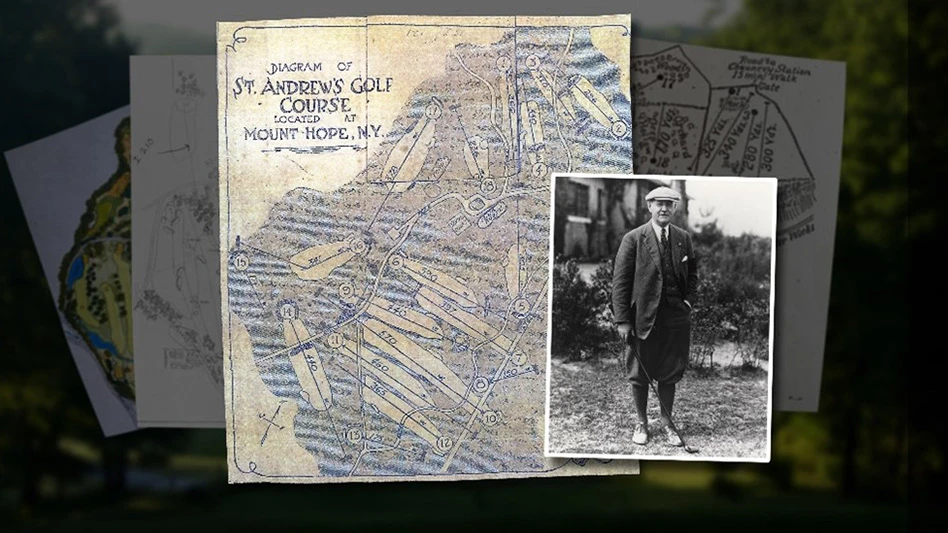
Courtesy of The St. Andrew's Golf Club
Responsibility for the numerous design changes made to The Saint Andrew's Golf Club’s back nine during the club’s first two decades of play at its Hastings-on-Hudson course has long been a subject of controversy, including a debunked claim of involvement by the estate of Alister MacKenzie. The debate has been settled thanks to research confirming that it was the 1914 design work of Donald Ross that resolved the layout challenges that had bedeviled the club and brought an end to an era of continuous change.
Following extensive research, the Saint Andrew’s Historical Committee recently presented the case supporting Ross’ role in the redesign of (then) holes 10-14 in the period 1914-17. Earlier this summer, Donald Ross Society President Brad Becken met with representatives of The Saint Andrew’s Golf Club, America’s oldest continuously operating golf club, to review the meticulously prepared report, including board of directors’ minutes, drawings and other supporting documents from the early 1900s.
Since its founding in 1888, the club has had golf courses on four sites. The current course, at the time within the village of Mt. Hope, opened in 1897. Situated along a tributary of the Sprain River, the location offered a lush valley surrounded by craggy, wooded foothills. This terrain provided dramatic elevation changes and stunning sight lines but created layout challenges that manifested almost immediately. By 1901, four back-nine holes had been redesigned; by 1913, holes 10-14 had been changed at least seven times.
The Ross redesigns resolved these issues and remained in play, with little change, for 65 years. In 1983, Jack Nicklaus Associates redesigned and modernized the Mt. Hope course, eliminating Ross’s par-3 11th hole and redirecting the 10th fairway onto what had been the 11th green. The Nicklaus organization rebuilt tees, greens, and bunkers, and introduced water hazards throughout the course. However, the fairway lines of Ross’s holes 12, 13 and 14 were not altered and the work of Ross continues to play a prominent role in Saint Andrew’s contemporary course.
Becken told the club’s historical committee: “You have compiled a remarkable history of the Saint Andrew’s course and, despite all of the changes over time, present it in a clear and understandable way.”
In referencing the Donald Ross Society’s official Ross club list, he declared unequivocally, that going forward, “Saint Andrew’s will be in the book.” A Saint Andrew’s hole flag will now be on display in the Tufts Archives in Pinehurst, North Carolina, signifying the course’s inclusion in the illustrious portfolio shaped by Ross.
Latest from Golf Course Industry
- From the publisher’s pen: Conscientious of a bigger role
- Bernhard and Company partners with Laguna Golf Phuket
- Terre Blanche showcases environmental stewardship
- VIDEO: Introducing our December issue
- Bernhard and Company introduces Soil Scout
- Nu-Pipe donates to GCSAA Foundation’s Centennial Campaign
- GCSAA enhances golf course BMP tool
- Melrose leadership programs sending 18 to 2026 GCSAA Conference and Trade Show





